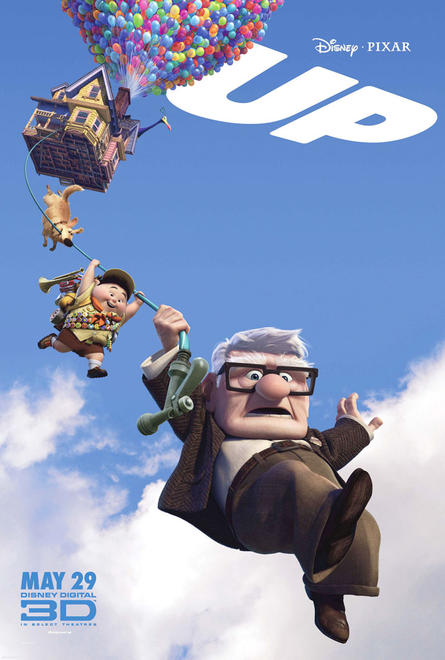
The business section of today’s The New York Times includes an article of interest to TheoFantastique. The story by Brooks Barnes is titled “Pixar’s Art Leaves Profit Watchers Edgy,” and it describes an unfortunate situation. As the article notes, Pixar Animation has not released a movie yet that has not been “a commercial and creative triumph,” but it appears that the Walt Disney company and a few folks on Wall Street, including toy retailers, are concerned that Pixar’s new venture, Up, may not fair well at the box office.
It seems that the concerns relate to some of the artistic daring of the film, a phenomenon also found in Pixar’s Wall-E: “there are stretches without dialogue,” and (heaven forbid) some of the scenes are done in black and white. Up is also said to be influenced by the noted Japanese anime figure Hayao Miyazaki. This pushing of the envelope in terms of artistic expression and artistic influences may not seem like much to worry about for those of us who appreciate filmmakers who go outside of the standard formulas for movies. But to others the bottom line is primary.
The New York Times states that there is concern over Up‘s box office potential as well as whether it will benefit “other Disney businesses.”
Pixar has seen diminishing returns with each successive film, but there is no denying that even those that did not generate as much revenue as anticipated, such as Wall-E, must nevertheless be recognized as an artistic success which was warmly embraced by audiences. This conflict between artists at Pixar and the business people at Disney creates an unfortunate dichotomy. Why can’t a film push the boundaries on artistic experimentation and yet also tell an entertaining tale that does well at the box office? Of course it remains to be seen whether this can be done with Up, but to pre-judge it in this fashion seems harsh. Disney might also remember that its founder was a leader in artistic experimentation in animation that did not always do well with viewing audiences. Recall Fantasia. Nevertheless, Walt strove for finding balance between both artistry and box office, and his corporate successors might reflect on the history of their own organization before too much consternation about Pixar.





I don’t think it’s necessarily a matter of the Disney suits not wanting to give Pixar a chance at being both artistically accomplished (though, frankly, I’d disagree with that assessment about Pixar)… I think it’s probably more a recognition from Disney’s own history that for as much as people complain about North American animation being nothing but funny animals and frilly princesses, audiences refuse to pay for anything else. Non-“Disney style” 2-D films (even by Disney) and non-“Pixar style” CGI films are still a hard sell in the West, even with a name like Miyazaki behind them.